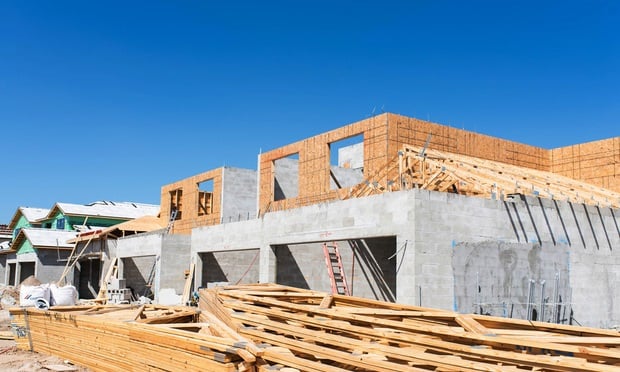WASHINGTON, DC—The headline numbers in housing starts for May don't tell the whole story, in the view of David Crowe, chief economist with the National Association of Home Builders. Blogging on Tuesday's new residential construction statistics jointly released by the US Census Bureau and the Department of Housing and Urban Development, Crowe acknowledges “mixed signals” but says the general trends are positive.
Multifamily starts in May were off 7.6% from April to 376,000, while permits declined 19.5% from the previous month to 372,000. “But the three-month moving average for multifamily starts is still the best since February 2006 and the decline is more the result of an extraordinarily high April,” Crowe writes. “The same trend was evident in the multifamily permits, which adjusted downward after scoring a seven-year high in April.”
The overall month-to-month decline of 6.5% in starts was driven solely by the multifamily sector, Crowe notes. In single-family housing, the drop-off was shallower—5.9%--while single-family permits rose 3.7% for the month, pointing to a pickup in future construction activity.
“The modest increase is evidence that builders expect continued release of pent-up demand and a gradual expansion of the housing market,” Crowe says. “We are still forecasting a 12% increase in total housing starts for the year.”
Crowe notes that the pace of single-family homes under construction has remained steady for the past six months at about 340,000. He attributes the steadiness to builders' ongoing conservativeness in adding inventory, “and the builders' read of the same conservative nature of potential home buyers.”
Other analysts offered varying responses. Noting that the pace of housing starts edged past one million for two consecutive months. Bloomberg quoted Brian Jones, New York City-based chief US economist at Societe Generale, as saying, “Housing is fine. Demand is improving.”
At Sterne Agee in Chicago, chief economist Lindsey Piegza notes that while the one-million-unit figure is encouraging, “from a historical perspective, starts remain tepid,” since the unit level marked the trough in activity in previous recessions. “Going forward, a stronger job market and lower housing costs will grow demand, particularly among the younger generations,” she says. “For now, housing remains positive but uneven.”?
Want to continue reading?
Become a Free ALM Digital Reader.
Once you are an ALM Digital Member, you’ll receive:
- Breaking commercial real estate news and analysis, on-site and via our newsletters and custom alerts
- Educational webcasts, white papers, and ebooks from industry thought leaders
- Critical coverage of the property casualty insurance and financial advisory markets on our other ALM sites, PropertyCasualty360 and ThinkAdvisor
Already have an account? Sign In Now
*May exclude premium content© 2025 ALM Global, LLC, All Rights Reserved. Request academic re-use from www.copyright.com. All other uses, submit a request to [email protected]. For more information visit Asset & Logo Licensing.








